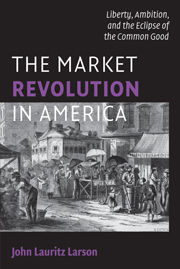At the end of its War for Independence, the United States comprised thirteen separate provinces on the coast of North America. Nearly all of 3.9 million people made their living through agriculture while a small merchant class traded tobacco, timber, and foodstuffs (flour, rice, livestock, salted meat, and fish) for tropical goods, useful manufactures, and luxuries in the Atlantic commercial community. By the time of the Civil War, eight decades later, the United States sprawled across the North American continent. Nearly 32 million people labored not just on farms, but in shops and factories making iron and steel products, boots and shoes, textiles, paper, packaged foodstuffs, firearms, farm machinery, furniture, tools, and all sorts of housewares. Civil War–era Americans borrowed money from banks; bought insurance against fire, theft, shipwreck, commercial losses, and even premature death; traveled on steamboats and in railway carriages; and produced $2 to 3 billion worth of goods and services, including exports of $400 million. This dramatic transformation is what some historians of the United States call the “market revolution.” For antebellum Americans, this revolution stood near the center of the experience of what happened to the United States during its grand experiment in republican government. For many modern historians, it does so still.
